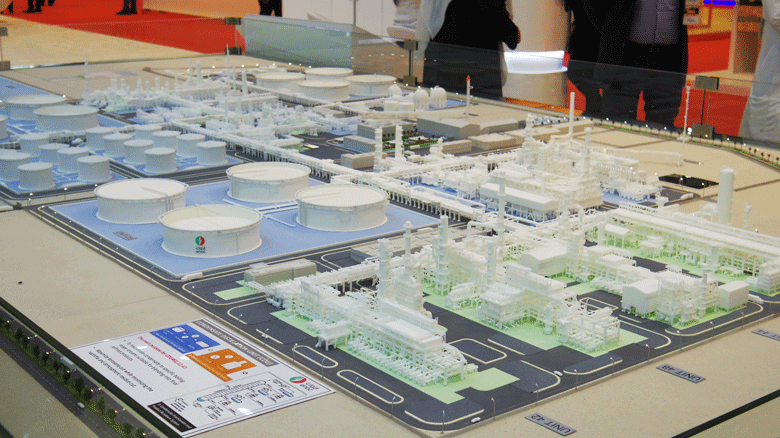

| By Max Reynard, director at Generation 3D |
Two primary reasons were behind Emirates National Oil Company’s (Enoc) decision to commission Dubai-based Generation 3D to create a 6 metre architectural hybrid model for its current and future refinery facilities.
Firstly, Enoc higher management wanted a physical representation of their ambitious expansion plan. Secondly, the model showcased the final outcome of the entire 900 square-metre site to the Enoc board, partners and customers at the Water, Energy, Technology & Environment Exhibition (Wetex) 2017 held in Dubai, and is now on display at Enoc’s company headquarters.
The challenge
For Generation 3D, the challenge began with a highly technical reverse engineering plan to rework data gathered from the existing site, to create fully 3D manufacturable files. This data was collected using the 3D laser scanning or light detection and ranging (Lidar) technology. This process alone took two months.
Following this, designers at Generation 3D began reverse engineering the Enoc oil refinery site using specialist computer-aided design (CAD) software and techniques. This was carried out in synchronisation with the site scanning team and the 3D printing to minimise lead time and drive efficiency.

Simultaneously, Enoc’s building contractor sent its proposed plans for the future development to Generation 3D in AutoCAD format. Generation 3D’s designers harmonised multiple CAD platforms such as 3DS Max, Magics, Bentley MicroStation and Pixologic ZBrush to improve file management. The team then painstakingly converted all the construction plans into 3D printable files, a process that requires time and skill.
Over the course of the project, Enoc’s engineers were regularly invited to analyse the work in progress, discuss updates and provide feedback to ensure complete transparency. Once approved, the 3D designs were exported to Generation 3D’s in-house 3D print-room to be manufactured overnight.
The technology
The designers at Generation 3D used selective laser sintering 3D-printing technology for this project. This was due to the durability of the nylon material used, the high accuracy and tolerance threshold (accurate to 50 microns) and flexible printing methods.
The designs were organised into batches and 3D-printed alongside the manual fabrication of the model base and podium. This combination of manual and digital manufacturing helped streamline the project and greatly reduced lead-time.
Updates and flexibility
The design of the model allows for sections to be easily altered and updated zone by zone, should there be any revisions in the site plan.
 This article is extracted from a report produced by MEED and Mashreq titled Disrupting Oil & Gas. Click here to download the report
This article is extracted from a report produced by MEED and Mashreq titled Disrupting Oil & Gas. Click here to download the report
To know more about the MEED Mashreq Partnership, get in touch with us at MEEDMashreqPartnership@meed.com or find more info on www.meedmashreqconstructionhub.com
You might also like...

TotalEnergies to acquire remaining 50% SapuraOMV stake
26 April 2024

Hyundai E&C breaks ground on Jafurah gas project
26 April 2024

Abu Dhabi signs air taxi deals
26 April 2024

Spanish developer to invest in Saudi housing
26 April 2024
A MEED Subscription...
Subscribe or upgrade your current MEED.com package to support your strategic planning with the MENA region’s best source of business information. Proceed to our online shop below to find out more about the features in each package.




